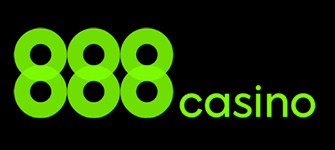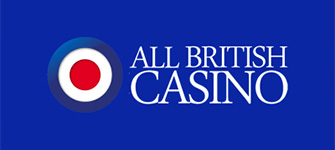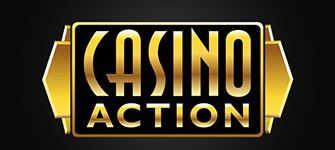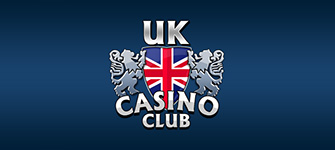Blackjack Variations
Blackjack is an age-old casino card game, with literally hundreds of intriguing and sometimes baffling variations (depending on where it is played). In an attempt to retain the interest of long-term fans of the game, casino operators have come up with over a hundred variants of the classic card game.
While the vast majority of these differ very slightly from one another rules-wise, some are so unique they feel like completely different card games. Others largely abide by standard rules but rely on side bets to attract the attention of players seeking an experience beyond classic blackjack. It makes sense that house edges and optimal playing decisions vary vastly between the different variations, which calls for strategy adjustments.
In this guide, we are not going to explain the basic rules of blackjack or give any important strategies. The purpose of this publication is to familiarize our audience with the different variants of the classic card game, their respective rules, and the impact the latter have on the games’ long-term theoretical return.
Atlantic City Blackjack
The name of this variation pretty much indicates where it borrows its rules from. This is one of the most popular blackjack variants of all time. You can find it both in New Jersey landbased casinos or online at Microgaming and iSoftBet-powered casinos.
Either way, this variant is dealt out of an 8-deck shoe and uses hole cards. This means the dealer receives one exposed card while their second card is dealt face-down. When the dealer shows an ace or a ten-value card, they would peek under it to check for potential blackjacks.
In this version, the dealer would always stand on all 17s. You can double down on any two cards should you wish to do so. You can also split up to 3 times to a maximum of 4 hands. Doubling down on split pairs is also an option.
One exception is made for pairs of aces, which cannot be resplit or hit. Instead, the dealer would draw only one extra card next to each split ace. The game pays at the traditional odds. Blackjacks offer a return of 3 to 2 and insurance against dealer blackjacks pays at odds of 2 to 1 whereas all other winning hands return even money.
Players can also take advantage of the late surrender rule and fold a starting hand after the dealer checks for blackjacks when showing an ace. In this case, the dealer would collect half of the player’s initial bet and give them the other half back. Atlantic City Blackjack has a long-term theoretical return of 99.65%.
Vegas Strip Blackjack
Vegas Strip Blackjack is a widespread variation that was inspired by the set of rules incorporated at Vegas Strip casinos like Circus Circus, the Bellagio, and MGM Grand. You can also play it online in demo mode or for real money at numerous Microgaming-powered casinos.
Vegas Strip Blackjack uses only 4 decks. Similarly to Atlantic City Blackjack, this is an American hole-card game where standing on all 17s (hard or soft) is mandatory for the dealer. The dealer also peeks under the hole card when their face-up card is a ten or an ace.
A player can double down on any two cards even after a split. Splitting is possible up to 3 times to a maximum of 4 hands. In Vegas Strip Blackjack, a player cannot split aces more than one time. Only one card is dealt next to each split ace.
Players cannot surrender after the dealer checks their hole card when exposing an ace. This, along with the deck number, is one of the few differences between Atlantic City and Vegas Strip Blackjack. Other than that, the game offers the standard payouts. Its theoretical return coincides with that of Atlantic City Blackjack.
Vegas Downtown Blackjack
Vegas Downtown Blackjack is another somewhat traditional variant inspired by the blackjack tables in Sin City. However, the game follows the rules implemented by downtown casinos like the Golden Nugget, The D, Binion’s, Fremont, and El Cortez.
Unlike the previous two varieties, this one is a pitch game, meaning that it is hand-dealt and uses two standard packs of cards. Hole cards are again in play, with the dealer peeking for blackjacks under aces and tens. Another difference results from the standing rules for the dealer who hits soft 17 rather than standing like in the previous two varieties.
The rules for the players are more tolerable, though. You can double down on any starting two-card hand, including after splitting pairs. You can resplit to form no more than 4 individual hands. An exception is made for pairs of aces – they cannot be resplit.
Drawing to split pairs of aces is disallowed and so is surrendering a hand against a dealer’s ace. The payouts are the same as those in Atlantic City and Vegas Strip Blackjack. The Return to Player is slightly lower at 99.62%.
Blackjack Switch
Up until now, we discussed more standard and widespread variants of 21 which differ only in terms of basic rules and deck number. What follows next is something completely out of the ordinary. We are talking about the bespoke Blackjack Switch variation, invented and patented by former advantage player Geoff Hall. The game was adapted for online play by the recognized software studio Playtech.
So what is so staggering about this variant you wonder? Well, to begin with, here you play on two betting positions rather than one and are dealt two hands, respectively. But this is not your regular multi-hand game. If you wish, you can switch the top cards between your two hands to boost your winning chances.
Of course, this variation would be too good to be true if all the other rules coincided with those in standard blackjack. Instead, they were tweaked to offset the advantage the card switching part gives to players.
For starters, there is a reduction in the payout for blackjacks, which pay even money (1 to 1) rather than 3 to 2. Not only does the dealer hit soft 17 but they push with the player with hands that total 22. Resplitting aces and surrendering are disallowed while doubling is possible only on initial two-card hands with totals of 9 through 11.
The game is dealt out of six full decks. Despite the rule adjustments, the game offers a very low house edge of around 0.14%. Playtech’s online version is more favorable to players, yielding a higher theoretical return than its landbased counterparts.
Double Attack Blackjack
Double Attack Blackjack is another Playtech creation that serves as a perfect demonstration of the renowned studio’s ingenuity. This variant is by itself a variation of Spanish 21, blending it with classic blackjack. Some of the rules differ significantly from those in standard versions of 21.
To begin with, Double Attack is dealt out of an 8-deck shoe but implements Spanish decks with 48 cards each because the 10s of the four suits are removed. The dealer is required to stand on both hard and soft 17 and peeks for naturals. Players can double down after splitting and resplit to a maximum of four hands. Hitting split aces or resplitting them is not possible.
The difference here is that blackjacks pay at odds of 1 to 1 whereas winning insurance side bets pay 5 to 2, or two and a half times your insurance wager. One great thing about this game is that players get the chance to surrender and double down whenever they feel like it, including after they have split a pair.
Once the dealer receives their exposed card, players can double their wager by posting chips in the Double Attack betting box. The Double Attack wager cannot exceed their initial bet, though.
Provided that you split afterwards, the split bet must also match the Double Attack bet. The game offers additional betting opportunities in the form of the Bust It side wager. You can earn a payout of up to 200 to 1 if you predict the dealer’s bust hand. Payouts of up to 15 to 1 are awarded to those who guess the dealer’s bust card.
Free Bet Blackjack
Free Bet Blackjack (also known as Free Chip Blackjack) is a thrilling new variation of the popular card game that offers players an interesting twist. The game is available at both brick-and-mortar and online casinos, particularly those powered by Playtech. It is not surprising it was introduced by no other than the creator of Blackjack Switch, Geoff Hall.
The most widespread version of the game plays with six decks and requires the dealer to hit soft 17s. Players can double after a split, with the option to resplit to a maximum of 4 hands. Surrender is unavailable. The exact rules might vary across landbased and online variants, though.
The main thing of interest here is that players can split and double down on certain hands at no extra cost. Free doubling down is available only on hard totals 9 through 11. If the double down is unsuccessful, the player loses only their initial wager. However, free doubling is unavailable on soft hands. You can still double on other two-card totals but will have to pay for the move.
Players can also make use of free splitting on all pairs as long as they do not consist of ten-value cards. Drawing to split aces is allowed as well. Needless to say, free splits and doubles yield a massive edge for the player, in fact, around 6%. To offset this advantage, Geoff Hall has introduced the same catch like the one in Blackjack Switch.
Rather than busting, the dealer pushes with a total of 22 against all unbusted totals of the player. The only exception to this rule is when the player has obtained an untied natural, in which case they are awarded the standard payout of 3 to 2. Provided that both the dealer and the player get a 17 after the initial deal, the player’s 17 wins. Another rule dictates that the player pushes with the dealer rather than winning whenever the dealer breaks their hand with a ten-value card.
Apart from the free doubles and splits, players can shoot for additional payouts by posting three types of side wagers. These include the familiar Perfect Pairs (with a top payout of 25 to 1), Free Fortune (top payout of 1,000 to 1), and Bust Bonanza (pays up to 45 to 1). The theoretical return in the main game, side bets excluded, is 99.23%.
Perfect Pairs
We mentioned the Perfect Pairs side bets earlier when we discussed Free Bet Blackjack. Now it is time to cover this popular set of side wagers in further depth. These are available across a wide range of online blackjack games, including some of the releases of notable software studios like Playtech, Felt, Arrow’s Edge, and RealTime Gaming.
These side bets are also offered in the live dealer format, particularly at the live tables of suppliers Evolution Gaming and Ezugi, among others. The main rules in Perfect Pairs generally coincide with those in traditional blackjack although there may be minuscule discrepancies between different online releases.
In general, most versions play with six full decks, the dealer stands on soft 17, and doubling after a split is permitted. Resplitting and drawing to split aces are both impossible. Many of the versions utilize the European style of card dealing. There are no hole cards and peeking on behalf of the dealer is, therefore, impossible.
The most interesting thing about this game is the Perfect Pairs group of side bets. These are resolved separately from the outcomes in the main game and can help you bag larger payouts. The exact casino odds for winning Perfect Pairs side wagers differ depending on who supplies the game.
Bonus Payouts for Perfect Pairs Side Bets:
- A payout of 25 to 1 is awarded whenever the first two cards of the player or the dealer are of the same denomination and suit. This is where the game gets its name from since such hands are referred to as “perfect pairs”. Note that the payout is higher at odds of 30 to 1 in some Perfect Pairs variants, particularly the one released by Arrow’s Edge.
- Colored pairs pay at odds of 12 to 1 (or 10 to 1 in the Arrow’s Edge version) whenever the starting hand of the dealer or the player contains offsuit cards of the same color.
- Mixed pairs are those that contain paired cards of different suits and color but of the same denomination. The payout is usually 6 to 1 although some variations pay at lower odds of 5 to 1 to compensate for the higher payout for perfect pairs (30 to 1).
Super Fun 21
Unlike most variations of the game, Super Fun 21 uses only 1 standard 52-card deck. The dealer must always hit soft 17 and peeks under their hole card when showing an ace or a ten. Unlike other games of 21, hitting blackjack in Super Fun 21 does not pay at odds of 3 to 2. You can only win even money with this hand.
Even so, the greatest thing about Super Fun 21 is that a player’s blackjack always beats the dealer’s blackjack instead of pushing. Players can double down on any hand not only on starting two-card totals, including after a split. The same goes for surrendering a hand, which is possible at any stage during a round.
Double down rescue is also available. Under this rule, players can surrender even after they have previously doubled down. As for splitting, this is possible up to 3 times to a maximum of 4 hands. Best of all, you also have the chance to hit and double down on split aces. Super Fun 21 also has special bonus payouts on specific hands as you shall see below.
Bonuses:
- A player blackjack in diamonds will pay 2 to 1.
- Reach a total of 20 or less with six cards and you win automatically. This rule is also referred to as 6-card Charlie and favours the player because it decreases the house advantage, albeit slightly. A 6-card Charlie in Super Fun 21 pays even money.
- If you hit a total of precisely 21 with 5 or 6 cards, your hand is an automatic winner, regardless of what the dealer has, and pays at odds of 2 to 1.
Spanish 21
Spanish 21, also known as Spanish Blackjack, resembles, to a great extent, Super Fun 21 rules-wise. However, it is worth noting that the game uses 8 short decks of cards. The decks are called “short” because the 10s of the four suits are removed from play.
In Spanish 21, the dealer always has to hit soft 17. Also, a player’s blackjack will win over the dealer’s blackjack. The same goes for a player hand that totals 21, which always beats the dealer’s 21 rather than pushing. You can double down on any number of cards but re-doubling is possible only once.
The similarities with Super Fun 21 continue as splitting is allowed 3 times to a maximum of 4 hands. Resplitting, hitting, and doubling on split aces is permitted as well under this set of rules.
Surrendering is possible on any number of cards, including after a double down. Similarly to Super Fun 21, this short-deck blackjack variation also has bonus payouts on special hands. It is worth mentioning these are not awarded after splits and double downs, however.
Bonuses:
- A total of 21 with 5 cards will pay 3 to 2.
- A total of 21 with 6 cards will pay 2 to 1.
- A hand that totals 21 consisting of 7 or more cards will pay 3 to 1.
- A total of 21 containing offsuit 6,7,8 or 7,7,7 will pay 3 to 2.
- A total of 21 consisting of suited 6,7,8 or 7,7,7 will pay 2 to 1.
- A hand with a total of 21 consisting of 6,7,8 or 7,7,7 of spades will pay 3 to 1.
- The top payout of 50 to 1 is awarded whenever the dealer’s exposed card is a 7 while the player holds suited 7, 7, 7.
It is important to specify that all these payouts do not result from posting additional side bets. They are awarded automatically whenever you obtain the above-listed hands within the main game.
Big Five Blackjack
This variation of the game is called Big Five because it is played with 5 decks. The dealer must hit soft 17 but never peeks for blackjacks since no hole cards are in play. This is a European-style variant of blackjack where the dealer draws their second card after players have completed their hands.
Doubling down on any 2 cards is possible. Splitting aces is also permitted but you will be dealt only 1 card to each split ace. Players can split up to 3 times to form a maximum of 4 hands. The only exception is made for split aces, which cannot be resplit or hit.
The biggest claim to fame of this game, apart from using an unconventional number of decks, is the availability of early surrender. You can forfeit a bad hand at any point in the game as long as the dealer does not have an Ace showing. Other than that, the game offers the conventional payouts for winning hands, insurance, and blackjacks.
European Blackjack
European Blackjack probably has some of the poorest rules out of all the blackjack variations. If you still insist on playing it online, you will find it across a broad range of websites that run on the Microgaming software platform. The game is usually played using 2 decks although the number of decks can vary from 1 to 8, depending on where you play. The Microgaming version, in particular, uses two full decks.
As the name itself hints, this is also a European-style variation without hole cards. It follows the dealer peek rule is not applicable in this case. In European Blackjack, you can only double down if your initial hand’s total is 9, 10, or 11.
Splitting is also permitted but only once. Unlike ten-value cards cannot be split, either. This means you cannot split a King and a Queen, for example, although both are assigned a denomination of ten. Players can hit split aces as many times as they want. The dealer has to stand on all 17s. Under these playing conditions, the game’s theoretical return is 99.60%.
Double Exposure Blackjack
Double Exposure has gained huge popularity at both landbased and virtual casinos. Online players will find it in multiple varieties including some developed by Microgaming, NetEnt, and Playtech. Players from the United States will find it at US-facing online casinos, powered by RealTime Gaming, where it goes under the name Face Up 21.
The game is played with 8 full decks of cards but this is hardly the main thing of interest here. Unlike the other variations we have covered so far, the dealer will have both cards facing up, so you can plainly see their starting hand. This sounds like a big deal but wait until you hear the other rules of play in this game. We assure you they are far from optimal.
The dealer must hit soft 17 rather than standing, which puts you at a slight disadvantage. You can double down after a split but doubling options are restricted only to two-card totals of 9, 10, and 11.
The poor rules continue as the dealer takes all pushes except tied blackjacks. Speaking of blackjacks, these return even money rather than paying at the usual odds of 3 to 2. On a slightly more positive note, the player’s blackjack beats the dealer’s blackjack.
Splitting is allowed up to 3 times. Aces can be split and re-split to form 4 hands maximum, but you will be dealt only 1 card to each ace. The combination of all of these rules leads to a house edge of 0.70% in Double Exposure.


 PlayOJO Casino
PlayOJO Casino 888casino
888casino All British Casino
All British Casino Casino Action
Casino Action UK Casino Club
UK Casino Club